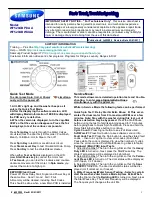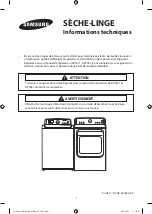
Chemical processes and technology
44
In this section, you will find a description of the causes of common chemical reactions
which can occur between different types of soiling, process chemicals, and the compo-
nents of the machine, along with their remedies as necessary.
This section is intended as a guide. If unforeseen interactions occur during reprocessing or
if you have any queries on this subject, please seek advice from Miele.
General information
Problem
Solution
If elastomers (hoses and seals) and plastics
in the machine are damaged, for example
by swelling, shrinking, hardening, or brittle-
ness of materials, tears, and cracks, com-
ponents will not function correctly and this
generally leads to leaks.
- Determine and remedy the causes of the
damage.
See information regarding “Associated
process chemicals”, “Soiling”, and “Reac-
tion between process chemicals and soil-
ing” in this section.
A heavy build-up of foam during the pro-
gram sequence will impair the cleaning and
rinsing effect on the wash items. Foam es-
caping from the wash cabinet can cause
damage to the machine.
When foam develops, the cleaning process
is not standardized or validated in principle.
- Determine and remedy the causes of the
foam.
- Check the process used regularly to mon-
itor foaming levels.
See information regarding “Associated
process chemicals”, “Soiling”, and “Reac-
tion between process chemicals and soil-
ing” in this section.
Corrosion to stainless steel in the wash
cabinet and to accessories can give them a
different appearance:
- rust (red marks/discoloration)
- black stains/discoloration
- white stains/discoloration (etched surface)
Corrosive pitting can lead to the machine
not being water-tight. Depending on the ap-
plication, corrosion can affect cleaning and
rinsing results (laboratory analysis) or cause
corrosion to (stainless steel) wash items.
- Determine and remedy the causes of cor-
rosion.
See information regarding “Associated
process chemicals”, “Soiling”, and “Reac-
tion between process chemicals and soil-
ing” in this section.
















































